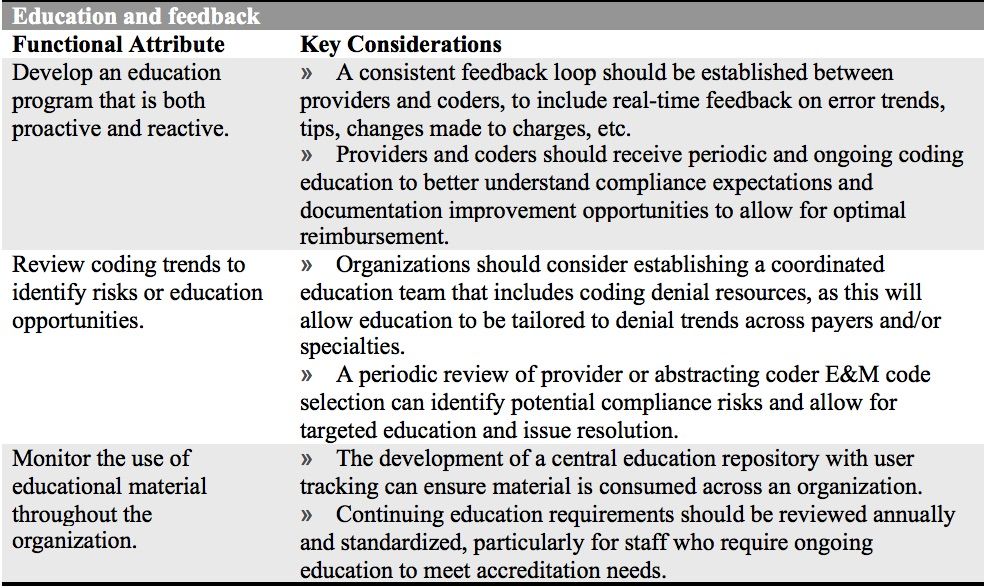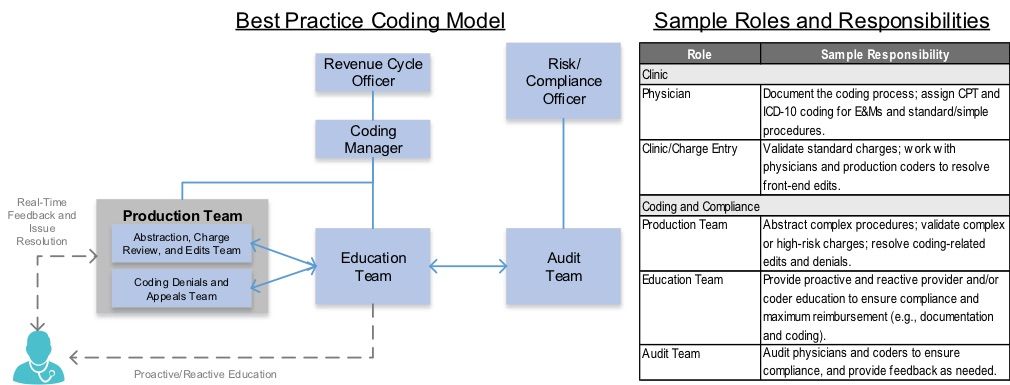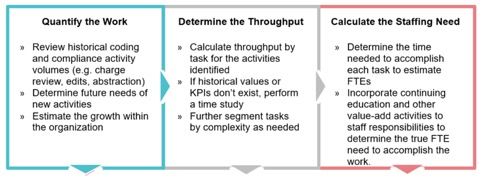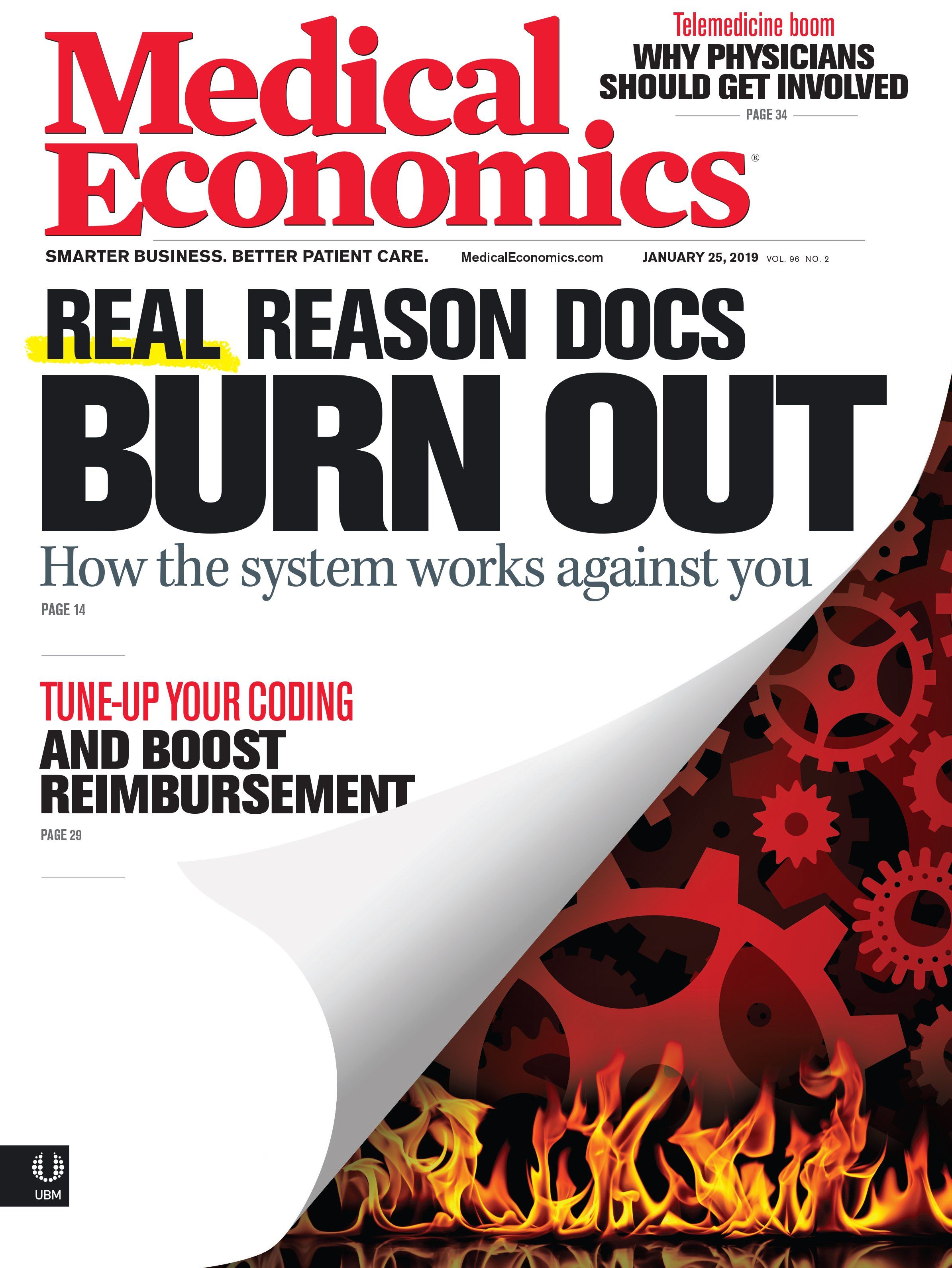Publication
Article
Medical Economics Journal
Avoiding a compliance and coding tug-of-war at your practice
Author(s):
Ensure compliance while maximizing reimbursement and staffing levels at your organization.
Developing a coding and compliance infrastructure that is both appropriately sized and equipped can be tricky for many independent and hospital-based physician groups. The tug-of-war that occurs when trying to maximize revenue without compromising compliance with professional fee billing can be daunting, especially when placing equal focus on productivity and performance.
In some cases, just bringing this topic to the forefront of discussions with clinical and management teams can be problematic, as coding and compliance specialists may be viewed as impediments to productivity. However, with the preponderance of recovery audit contractor (RAC) audits, complexity of ICD-10 coding, and changes in payer reimbursement policies, many organizations are now realizing the importance of enhancing their coding infrastructure to ensure success.
Why is coding important?
The coding process is no easy task-there are more than 8,000 CPT codes and 69,000 ICD-10 diagnosis codes to choose from, as well as a litany of complex payer and regulatory guidelines to follow, in order to code accurately. Moreover, organizations utilize a wide array of resources and workflows to complete the coding process. Some require providers to select codes via an EHR or encounter form, while others utilize support staff to abstract directly from the medical record, and each approach has its own benefits and drawbacks.
The challenges associated with billing and collections are not new, as inadequate attention to coding has always had the potential for high-cost repercussions (e.g., increased billing lag, unnecessary denials, increased cost to collect). In addition, the Office of the Inspector General’s ongoing focus on RAC audits for evaluation and management (E/M) coding signals increasing scrutiny on physician billing in the ambulatory setting, adding high audit and recoupment costs (or worse) to the list of challenges. For an organization to successfully manage the tug-of-war between cost and benefit for its coding and compliance program, it must first recognize the importance of the functions provided by its revenue cycle teams.
What does it take to perform well?
High-performing organizations maintain coding and compliance programs that appropriately balance revenue maximization, coding compliance, and costs to ensure each visit is coded for optimal reimbursement. All of the coding and compliance functions detailed in the tables below play an active role in fostering an organization’s overall success, and should be evaluated to see if there are opportunities for improvement within your own organization. Each activity is equally important builds upon the others to drive consistent professional fee coding.
The first set of activities to consider are pre-bill coding activities.

Next, organizations should review audit and compliance activities.

Finally, coding education and feedback loops should be reviewed.

Please note, while education is listed last in this series of functions, it is by no means least important. Creating something of a “chicken-or-egg” scenario, provider education needs to be informed by policy and audit, but also influences the ability to effectively perform.
How should programs be organized?
For most organizations it is infeasible to have certified coders abstract and/or review every professional encounter. To that end, the ideal operational structure is a function-based model, where coders are deployed to support critical activities based on their skill sets and expertise, while providers maintain a high degree of responsibility in the coding process for more routine encounters. In this model, illustrated below, the production team (responsible for abstraction, edits, and coding denials) and the audit team (responsible for compliance audits) provide trends/feedback to the education team, which in turn acts as a resource for providers by communicating issues and opportunities for improvement.
Figure 1: Sample Organization Structure

Given that each team is responsible for defined tasks, the best practice model enables consistency and quality and allows management to easily measure/monitor results. Work standards and performance expectations should also be established to confirm adherence to policies and protocols and ensure proper management of work volumes and backlogs.
Additionally, it should be noted that the audit team reports to a separate authority from the production team. This reporting structure helps guarantee that chart reviews are focused solely on compliance and are not influenced by cash opportunity.
That said, despite the segregation of duties, it is important that all members of the infrastructure adhere to a common set of policies and that teams are led by qualified individuals with deep coding expertise. Finally, while the model above describes distinct teams, there may be instances where qualified coders would be responsible for multiple functions (e.g., audit and education)-functional duties should be driven by size/necessity of the coding or compliance work.
How should programs be staffed?
While system tools and automation should be used where possible, the final step in establishing a successful coding and compliance program is to review the staffing model to ensure:
1. The appropriate number of resources are working in unison to complete the coding and compliance activities required; and
2. The work is segmented and structured in a way that allows for a streamlined and consistent approach to the workday.
Figure 2 provides a summary of the process organizations should follow to estimate necessary staffing levels.
Figure 2: Staffing Determination Process

In short, reviewing your organization’s coding and compliance infrastructure and implementing best practices can ultimately protect your organization from compliance-related risks and increase your organization’s reimbursement in a cost-effective manner. An examination of the activities highlighted above will ensure the charge submission process is efficient, claims are billed and adjudicated appropriately, and risk and subsequent expenses are mitigated.
Practice spotlight
With more than 1,600 providers across Utah and Idaho, Intermountain Healthcare is widely recognized as a leader in clinical quality improvement and efficient healthcare delivery.
Intermountain Health developed a model that prioritizes provider audit and education over coder abstraction. Generally speaking, under the model, providers are responsible for their own coding and charge entry; however, approximately 50 coding-certified consultants meet with the providers regularly to discuss areas of opportunity identified from audits and denials. It is important to note that given the complexity of select areas, coders are utilized to support procedural coding for orthopedics, cardiology, and neurosciences.
The rationale for Intermountain’s model is based upon the notion that educated providers need to clearly understand their role in the revenue cycle, as well as their exposure to risk. As Adam Freebairn, director of professional documentation and coding at Intermountain, put it, “when you disconnect doctors from billing, their documentation tends to suffer. They also tend to forget that they are ultimately accountable for the accuracy and compliance of their coding, regardless of whether a coder abstracted from the record.” In addition, the model is described as being a reaction to the expense and challenges associated with recruiting. According to Adam, “our research has found that coders are no more accurate than physicians that have received coding education and have the right tools in place. On top of that, it is hard to find great coders.”
Ben Colton is a principal and Chris Gaspard a senior consultant with ECG Management Consultants, a national consulting firm working exclusively with healthcare providers.






